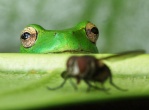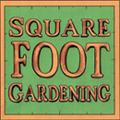Search
Latest topics
» Happy Birthday!!by AtlantaMarie Today at 7:11 am
» How best to keep a fallow SFG bed
by KiwiSFGnewbie Yesterday at 9:14 pm
» Thai Basil
by markqz Yesterday at 1:40 pm
» Preserving A Bumper Tomato Harvest with Freezing vs Canning
by plantoid Yesterday at 11:36 am
» New SFG gardener in Auckland
by sanderson Yesterday at 12:14 am
» Mark's first SFG
by sanderson 11/6/2024, 11:51 pm
» Need Garden Layout Feedback
by sanderson 11/5/2024, 2:33 pm
» What Have You Picked From Your Garden Today
by OhioGardener 11/5/2024, 2:29 pm
» Greetings from Southeastern Wisconsin
by sanderson 11/5/2024, 2:01 pm
» N & C Midwest: Nov. Dec. 2024
by Scorpio Rising 11/3/2024, 3:51 pm
» Spinning Compost Bin-need some ideas
by rtfm 11/2/2024, 7:49 pm
» Kiwi's SFG Adventure
by KiwiSFGnewbie 10/31/2024, 9:55 pm
» Growing fruit trees in Auckland
by OhioGardener 10/31/2024, 4:23 pm
» Vermiculite -- shipping sale through 10/31/2024
by markqz 10/30/2024, 2:27 pm
» N & C Midwest: October 2024
by Scorpio Rising 10/30/2024, 10:38 am
» What are you eating from your garden today?
by Scorpio Rising 10/27/2024, 10:27 pm
» Old Mulch and Closing Beds for Winter
by sanderson 10/26/2024, 11:00 pm
» Ohio Gardener's Greenhouse
by OhioGardener 10/25/2024, 7:17 pm
» Hello from Land of Umpqua, Oregon Zone 8b
by sanderson 10/25/2024, 3:14 pm
» Hello everyone!
by SFGHQSTAFF 10/24/2024, 3:22 pm
» Senior Gardeners
by sanderson 10/23/2024, 6:09 pm
» Hello from South Florida
by markqz 10/23/2024, 10:30 am
» Confirm what this is
by sanderson 10/11/2024, 2:51 pm
» Harlequin Beetles?
by sanderson 10/7/2024, 3:08 pm
» N & C Midwest: September 2024
by OhioGardener 9/30/2024, 4:13 pm
» The SFG Journey-Biowash
by OhioGardener 9/29/2024, 8:33 am
» Fall is For Garlic Planting
by Scorpio Rising 9/28/2024, 12:19 am
» source for chemical-free lanscape fabric
by Woodsong 9/19/2024, 10:51 am
» Hurricane
by sanderson 9/14/2024, 5:42 pm
» Pest Damage
by WBIowa 9/8/2024, 2:48 pm
Google
Grub worms in compost
+4
mrwes40
RoOsTeR
batmap
ltree74
8 posters
Page 1 of 1
 Grub worms in compost
Grub worms in compost
I am wondering if anyone has any experience with grub worms in their compost? I'm not sure if they are a good thing or a bad thing. I have a large tumbler bin and thought I had a great deal when I picked up a bag of fresh grass clippings. Now the grubs are in there. I know wigglers are good and earth worms. I've always here grub worms are bad. I googled it but no clear verdict on the subject. Thanks for any input.

ltree74- Posts : 12
Join date : 2011-03-05
Location : Florida
 June Beetle
June Beetle
Grub worms are definitely bad for any landscape or garden.
Common Name: Grubworm
Scientific Name: Varies
Order: Coleoptera
Description: Adult beetles, commonly referred to as May beetles or Junebugs are ½ to 5/8 inches long, and reddish brown. White grubs are "C"-shaped larvae, up to 1 inch long, with cream-colored bodies and brown head capsules. They have three pairs of legs, one on each of the first three segments behind the head.
There are more than 100 species of scarab beetles from several genera (e.g. Cyclocephala, Phyllophaga and others) in Texas that are considered to be white grubs, May beetles and Junebugs. However, the most common is Phyllophaga crinita. Their biologies are similar, but species differ in distribution, habitat preference, length of life cycle and seasonal occurrence. Other common species include the southern masked chafer, Cyclocephala immaculata (Oliver), and the green June beetle, Cotinis nitida (Linnaeus). One notable member of the family Scarabaeidae, the Japanese beetle, Popillia japonica, introduced into the northeastern United States and migrating west and south, has not been detected in Texas to date.
Life Cycle: Adults begin to emerge in spring. During adult flights large numbers of beetles can be attracted to lights. Peak flights occur in mid to late June in central Texas. Females, less attracted to lights, tunnel 2 to 5 inches into the soil and deposit eggs. In 3 to 4 weeks, small grubs (larvae) hatch from eggs and develop through three stages (instars), with the first two stages lasting about 3 weeks. The last larval stage remains in the soil from the fall through spring. In spring and early summer, white grubs pupate 3 to 6 inches deep in the soil. Adults emerge from pupae in about 3 weeks. There is one generation per year, but in north Texas, development may take two years.
Habitat, Food Source(s), Damage: Mouthparts are for chewing. Phyllophaga crinita is common in Texas turfgrass, particularly bermudagrass, St. Augustinegrass and tall fescue. Feeding of large numbers of grubs causes lawns to turn yellow and die. Severely damaged grass can be "rolled up" like a carpet. Grubs also feed on the roots of weeds, vegetable transplants and ornamental plants. In agriculture, they are important pests of forage, corn, sorghum and sugarcane. Most severe injury to plants is caused by large (third stage or instar) grubs feeding on roots in the fall and spring. White grubs are frequently encountered tilling garden soil or by sifting through soil underneath damaged turfgrass. Adults can be abundant around lights in the spring of the year.
Pest Status: Larval stages eat roots of grasses, vegetable and ornamental plants; Adults can be a nuisance around lights at night in early summer; medically harmless.





Managing White Grubs
Knowing when you have a problem. White grub damage can be detected by the presence of irregular- shaped areas of weakened or dying grass in the lawn. Less-severely damaged turf lacks vigor and is more vulnerable to invasion by weeds. Depending on location within the state, damage may appear any time between the months of June and October.
Turf grass damaged by white grubs has a reduced root system and is easily pulled from the soil. Grubs should be readily found in the top few inches of soil, in the turf grass root zone. Turf grass usually recovers from white grub damage by fall or the following spring.
Figure 3. Turf grass-infesting white grub larvae feeding on grass roots. Grubs are most damaging when they reach a length of 1/2- to 1-inch. At least one turf grass disease, Take-all Patch, can sometimes be mistaken for white grub damage.
Take-all Patch occurs most frequently in spring and early summer and can be distinguished by the rotted appearance of the roots. In contrast with white grub damage, dead spots caused by Take-all Patch may persist into the summer months.
Some Texas lawns never suffer white grub damage, while others are damaged year after year. If your lawn consistently dies out in patches during late summer and if you can verify that white grubs are the culprits, you may benefit from a preventative treatment. On the other hand, if you want to minimize your use of insecticides and don’t mind sampling for white grubs, follow the quick decision guide on page 6. By confirming that you have white grubs before treating your yard, you can avoid spending money on grub control and reduce pesticide use.
To confirm whether you need to treat for grubs, examine several soil sections at least 3 to 4 inches across and 4 inches deep (sample sandy soils to greater depths). A good rule of thumb is to examine several soil plugs (up to one square foot per 1000 square feet of turf) from widely scattered parts of the lawn. Take care to include areas at the edges of suspected grub damage. Finding more than five white grubs per square foot justifies treatment, although some lawns with even higher numbers of grubs may show no damage.
Non-chemical controls. Several non-chemical treatments are available for controlling white grubs. Beneficial nematodes within the genera Steinernema and Heterorhabditis are tiny worms that attack white grubs and other soil inhabiting insects. These microscopic worms can be purchased in stores or through garden supply catalogs. Commercial nematode products are usually designed to be mixed with water and applied to lawns using a hose-end or hand-held sprayer. Recent research shows that under good conditions commercially- available nematodes can reduce white grub populations by 50% or more.
Nematodes must be supplied with adequate moisture to help them move down into the soil where grubs are feeding. At least 1/4 inch of water should be applied before, and another 1/ 4 inch of water applied just after, nematodes are sprayed on the lawn. These worms pose no threat to humans or landscape plants and are an environmentally sound alternative for those who prefer not to use pesticides on their lawn.
One microbial pesticide, Bacillus popilliae, or milky spore disease, often is recommended for white grub (Japanese beetle) control in other regions of the U.S.; however, it has not been shown to be effective against Texas turf-infesting white grubs.
Spiked sandals sold for aerating turf have been tried with some success for controlling damaging grub populations. According to one study, repeatedly walking over heavily infested turf with the spiked sandals may reduce grub populations up to 50%. These sandals are available through several garden supply catalogs.
Chemical control. Proper timing and chemical application are critical to suppressing white grubs. New white grub insecticides are more persistent and less toxic to beneficial arthropods and earthworms. However, these treatments must be applied early enough to kill the smaller (less than 1/2-inchlong) larvae. Once white grubs reach the third-instar life stage, they are more difficult to control with the new products.
The insecticides imidacloprid and halofenozide are used most today for white grub control. Imidacloprid is most effective against smalland medium-sized grubs but may kill some grubs larger than 1/2 inch long. Imidacloprid trade names include Merit®, Bayer Advanced Lawn™ Season Long Grub Control and Scott's® Grub-Ex®. The lethal effects of the insect growth regulator halofenozide are limited to early white grub life stages. Halofenozide is ineffective if applied too late, after grubs have reached the third-instar life stage. Halofenozide trade names include Mach 2, Spectracide® Grub Stop™ and Hi-Yield® Kill-a-Grub™.
Fortunately, both halofenozide and imidacloprid can be applied early and persist in the soil. Ideally, both products should be applied within six weeks of egg-laying. In south Texas, apply insecticides for white grubs in early- to mid-June. In central and north Texas, the optimal treatment time is early- to mid- July.
Where grub damage is already evident in lawns and larger grubs are present, use products containing trichlorfon or carbaryl. Because they bind to soil particles and remain close to the surface even after irrigation, pyrethroid insecticides (such as permethrin, esfenvalerate, cyfluthrin and bifenthrin) are less effective against white grubs, especially in clay soils.
Post-treatment irrigation is essential for all grub-control products. To ensure that insecticides reach the root zone, water-in liquid for- mulations with 1/2 to one inch of water immediately after application. Irrigate granular formulations within 24 hours to wash the insecticide into the soil and minimize the chance for exposure to people, pets and wildlife. Use a rain gauge or straight-sided can to verify application of sufficient irrigation water. Two or more irrigation applications may be needed if the soil is wet or difficult to penetrate. Water applied too quickly may cause run-off and pesticide loss. Irrigating the soil prior to insecticide application, particularly when the soils are dry, can improve the effectiveness of insecticides.
For dry soils, apply 1/4 to 1/2 inch of water the day before a treatment to improve spray penetration of the soil and to encourage white grubs to move closer to the soil surface. This makes grubs easier to contact with the insecticide treatment.
Heavy thatch buildup can reduce the effectiveness of insecticide sprays. Thatch is the accumulation of dead plant material, such as dead grass stems, between the soil surface and the turf grass foliage. Thatch layers greater than 1/2 inch can result in greater susceptibility of the turf to plant diseases and can lead to other problems. Recent research has shown that many pesticides bind to thatch, preventing them from reaching the soil and reducing their effectiveness.
De-thatching machines or soil aerifiers that remove small plugs of soil can be rented to help remove thatch and enhance penetration of the turf by pesticides. Excessive thatch buildup is more likely to occur with hybrid bermuda grasses, St. Augustine grass and some zoysia grasses. Use of mulching mowers to recycle grass clippings should not cause thatch buildup in regularly mowed lawns.
Environmental Considerations. Unnecessary insecticide applications sometimes create more problems than they solve. Pesticides can have detrimental effects on beneficial organisms, like earthworms, that help decompose thatch. Most insecticides do not discriminate between "good" and "bad" bugs and may kill beneficial insects that help control other pests. Also, unnecessary pesticide applications can increase the risk of insecticide resistance developing among white grub and other pest populations. For these reasons, routine, "preventative" insecticide applications to lawns for white grub control are not recommended.
Heavy rainfall can wash recently applied pesticides out of lawns, especially if the ground is saturated with water when the treatment is applied. Avoid treating lawns just before a heavy rain is expected. Also try to avoid application of pesticides to street gutters and sidewalks. Drop-type spreaders are less likely to scatter pesticide granules off of the target site than are rotary-type spreaders (Figure 4). Pesticide runoff from improper pesticide applications reduces the effectiveness of a treatment and can pollute above-ground and underground water supplies.
source: insects(dot)tamu(dot)edu
Literature: Hamman et al. 1985. Drees et al. 1994.
Common Name: Grubworm
Scientific Name: Varies
Order: Coleoptera
Description: Adult beetles, commonly referred to as May beetles or Junebugs are ½ to 5/8 inches long, and reddish brown. White grubs are "C"-shaped larvae, up to 1 inch long, with cream-colored bodies and brown head capsules. They have three pairs of legs, one on each of the first three segments behind the head.
There are more than 100 species of scarab beetles from several genera (e.g. Cyclocephala, Phyllophaga and others) in Texas that are considered to be white grubs, May beetles and Junebugs. However, the most common is Phyllophaga crinita. Their biologies are similar, but species differ in distribution, habitat preference, length of life cycle and seasonal occurrence. Other common species include the southern masked chafer, Cyclocephala immaculata (Oliver), and the green June beetle, Cotinis nitida (Linnaeus). One notable member of the family Scarabaeidae, the Japanese beetle, Popillia japonica, introduced into the northeastern United States and migrating west and south, has not been detected in Texas to date.
Life Cycle: Adults begin to emerge in spring. During adult flights large numbers of beetles can be attracted to lights. Peak flights occur in mid to late June in central Texas. Females, less attracted to lights, tunnel 2 to 5 inches into the soil and deposit eggs. In 3 to 4 weeks, small grubs (larvae) hatch from eggs and develop through three stages (instars), with the first two stages lasting about 3 weeks. The last larval stage remains in the soil from the fall through spring. In spring and early summer, white grubs pupate 3 to 6 inches deep in the soil. Adults emerge from pupae in about 3 weeks. There is one generation per year, but in north Texas, development may take two years.
Habitat, Food Source(s), Damage: Mouthparts are for chewing. Phyllophaga crinita is common in Texas turfgrass, particularly bermudagrass, St. Augustinegrass and tall fescue. Feeding of large numbers of grubs causes lawns to turn yellow and die. Severely damaged grass can be "rolled up" like a carpet. Grubs also feed on the roots of weeds, vegetable transplants and ornamental plants. In agriculture, they are important pests of forage, corn, sorghum and sugarcane. Most severe injury to plants is caused by large (third stage or instar) grubs feeding on roots in the fall and spring. White grubs are frequently encountered tilling garden soil or by sifting through soil underneath damaged turfgrass. Adults can be abundant around lights in the spring of the year.
Pest Status: Larval stages eat roots of grasses, vegetable and ornamental plants; Adults can be a nuisance around lights at night in early summer; medically harmless.





Managing White Grubs
Knowing when you have a problem. White grub damage can be detected by the presence of irregular- shaped areas of weakened or dying grass in the lawn. Less-severely damaged turf lacks vigor and is more vulnerable to invasion by weeds. Depending on location within the state, damage may appear any time between the months of June and October.
Turf grass damaged by white grubs has a reduced root system and is easily pulled from the soil. Grubs should be readily found in the top few inches of soil, in the turf grass root zone. Turf grass usually recovers from white grub damage by fall or the following spring.
Figure 3. Turf grass-infesting white grub larvae feeding on grass roots. Grubs are most damaging when they reach a length of 1/2- to 1-inch. At least one turf grass disease, Take-all Patch, can sometimes be mistaken for white grub damage.
Take-all Patch occurs most frequently in spring and early summer and can be distinguished by the rotted appearance of the roots. In contrast with white grub damage, dead spots caused by Take-all Patch may persist into the summer months.
Some Texas lawns never suffer white grub damage, while others are damaged year after year. If your lawn consistently dies out in patches during late summer and if you can verify that white grubs are the culprits, you may benefit from a preventative treatment. On the other hand, if you want to minimize your use of insecticides and don’t mind sampling for white grubs, follow the quick decision guide on page 6. By confirming that you have white grubs before treating your yard, you can avoid spending money on grub control and reduce pesticide use.
To confirm whether you need to treat for grubs, examine several soil sections at least 3 to 4 inches across and 4 inches deep (sample sandy soils to greater depths). A good rule of thumb is to examine several soil plugs (up to one square foot per 1000 square feet of turf) from widely scattered parts of the lawn. Take care to include areas at the edges of suspected grub damage. Finding more than five white grubs per square foot justifies treatment, although some lawns with even higher numbers of grubs may show no damage.
Non-chemical controls. Several non-chemical treatments are available for controlling white grubs. Beneficial nematodes within the genera Steinernema and Heterorhabditis are tiny worms that attack white grubs and other soil inhabiting insects. These microscopic worms can be purchased in stores or through garden supply catalogs. Commercial nematode products are usually designed to be mixed with water and applied to lawns using a hose-end or hand-held sprayer. Recent research shows that under good conditions commercially- available nematodes can reduce white grub populations by 50% or more.
Nematodes must be supplied with adequate moisture to help them move down into the soil where grubs are feeding. At least 1/4 inch of water should be applied before, and another 1/ 4 inch of water applied just after, nematodes are sprayed on the lawn. These worms pose no threat to humans or landscape plants and are an environmentally sound alternative for those who prefer not to use pesticides on their lawn.
One microbial pesticide, Bacillus popilliae, or milky spore disease, often is recommended for white grub (Japanese beetle) control in other regions of the U.S.; however, it has not been shown to be effective against Texas turf-infesting white grubs.
Spiked sandals sold for aerating turf have been tried with some success for controlling damaging grub populations. According to one study, repeatedly walking over heavily infested turf with the spiked sandals may reduce grub populations up to 50%. These sandals are available through several garden supply catalogs.
Chemical control. Proper timing and chemical application are critical to suppressing white grubs. New white grub insecticides are more persistent and less toxic to beneficial arthropods and earthworms. However, these treatments must be applied early enough to kill the smaller (less than 1/2-inchlong) larvae. Once white grubs reach the third-instar life stage, they are more difficult to control with the new products.
The insecticides imidacloprid and halofenozide are used most today for white grub control. Imidacloprid is most effective against smalland medium-sized grubs but may kill some grubs larger than 1/2 inch long. Imidacloprid trade names include Merit®, Bayer Advanced Lawn™ Season Long Grub Control and Scott's® Grub-Ex®. The lethal effects of the insect growth regulator halofenozide are limited to early white grub life stages. Halofenozide is ineffective if applied too late, after grubs have reached the third-instar life stage. Halofenozide trade names include Mach 2, Spectracide® Grub Stop™ and Hi-Yield® Kill-a-Grub™.
Fortunately, both halofenozide and imidacloprid can be applied early and persist in the soil. Ideally, both products should be applied within six weeks of egg-laying. In south Texas, apply insecticides for white grubs in early- to mid-June. In central and north Texas, the optimal treatment time is early- to mid- July.
Where grub damage is already evident in lawns and larger grubs are present, use products containing trichlorfon or carbaryl. Because they bind to soil particles and remain close to the surface even after irrigation, pyrethroid insecticides (such as permethrin, esfenvalerate, cyfluthrin and bifenthrin) are less effective against white grubs, especially in clay soils.
Post-treatment irrigation is essential for all grub-control products. To ensure that insecticides reach the root zone, water-in liquid for- mulations with 1/2 to one inch of water immediately after application. Irrigate granular formulations within 24 hours to wash the insecticide into the soil and minimize the chance for exposure to people, pets and wildlife. Use a rain gauge or straight-sided can to verify application of sufficient irrigation water. Two or more irrigation applications may be needed if the soil is wet or difficult to penetrate. Water applied too quickly may cause run-off and pesticide loss. Irrigating the soil prior to insecticide application, particularly when the soils are dry, can improve the effectiveness of insecticides.
For dry soils, apply 1/4 to 1/2 inch of water the day before a treatment to improve spray penetration of the soil and to encourage white grubs to move closer to the soil surface. This makes grubs easier to contact with the insecticide treatment.
Heavy thatch buildup can reduce the effectiveness of insecticide sprays. Thatch is the accumulation of dead plant material, such as dead grass stems, between the soil surface and the turf grass foliage. Thatch layers greater than 1/2 inch can result in greater susceptibility of the turf to plant diseases and can lead to other problems. Recent research has shown that many pesticides bind to thatch, preventing them from reaching the soil and reducing their effectiveness.
De-thatching machines or soil aerifiers that remove small plugs of soil can be rented to help remove thatch and enhance penetration of the turf by pesticides. Excessive thatch buildup is more likely to occur with hybrid bermuda grasses, St. Augustine grass and some zoysia grasses. Use of mulching mowers to recycle grass clippings should not cause thatch buildup in regularly mowed lawns.
Environmental Considerations. Unnecessary insecticide applications sometimes create more problems than they solve. Pesticides can have detrimental effects on beneficial organisms, like earthworms, that help decompose thatch. Most insecticides do not discriminate between "good" and "bad" bugs and may kill beneficial insects that help control other pests. Also, unnecessary pesticide applications can increase the risk of insecticide resistance developing among white grub and other pest populations. For these reasons, routine, "preventative" insecticide applications to lawns for white grub control are not recommended.
Heavy rainfall can wash recently applied pesticides out of lawns, especially if the ground is saturated with water when the treatment is applied. Avoid treating lawns just before a heavy rain is expected. Also try to avoid application of pesticides to street gutters and sidewalks. Drop-type spreaders are less likely to scatter pesticide granules off of the target site than are rotary-type spreaders (Figure 4). Pesticide runoff from improper pesticide applications reduces the effectiveness of a treatment and can pollute above-ground and underground water supplies.
source: insects(dot)tamu(dot)edu
Literature: Hamman et al. 1985. Drees et al. 1994.

batmap-
 Posts : 69
Posts : 69
Join date : 2013-06-27
Age : 55
Location : Texas
 Re: Grub worms in compost
Re: Grub worms in compost
Batmap, information is good but it's more appropriate to post links on the forum instead of copying and pasting. 

I am my gardens worst enemy.

RoOsTeR-
 Posts : 4299
Posts : 4299
Join date : 2011-10-04
Location : Colorado Front Range
 Re: Grub worms in compost
Re: Grub worms in compost
For some reason, I do not have that ability. I think because I am still under a week old to the forum.

batmap-
 Posts : 69
Posts : 69
Join date : 2013-06-27
Age : 55
Location : Texas
 Re: Grub worms in compost
Re: Grub worms in compost
Let's try to refrain from copy and paste.

I am my gardens worst enemy.

RoOsTeR-
 Posts : 4299
Posts : 4299
Join date : 2011-10-04
Location : Colorado Front Range
 Re: Grub worms in compost
Re: Grub worms in compost
ltree74 wrote:I am wondering if anyone has any experience with grub worms in their compost? I'm not sure if they are a good thing or a bad thing. I have a large tumbler bin and thought I had a great deal when I picked up a bag of fresh grass clippings. Now the grubs are in there. I know wigglers are good and earth worms. I've always here grub worms are bad. I googled it but no clear verdict on the subject. Thanks for any input.
Good chance they are grubs of the Green Fruit Beetle. Check out this web site. I've had them in my pile before:
http://faq.gardenweb.com/faq/lists/soil/2002013027009234.html
Bill

mrwes40-
 Posts : 123
Posts : 123
Join date : 2012-04-12
Location : Zone 6b (Central Connecticut)
 Re: Grub worms in compost
Re: Grub worms in compost
ltree74 wrote:I am wondering if anyone has any experience with grub worms in their compost? I'm not sure if they are a good thing or a bad thing. I have a large tumbler bin and thought I had a great deal when I picked up a bag of fresh grass clippings. Now the grubs are in there. I know wigglers are good and earth worms. I've always here grub worms are bad. I googled it but no clear verdict on the subject. Thanks for any input.
I'd be surprised to find June bug beetle grubs in the compost. It's not the environment they would prefer. The most common ones in compost are soldier fly larvae. They are totally beneficial, breaking down the compost, and then, as adult flies, catching pest insects. You can use Google images to find what they look like.
 Re: Grub worms in compost
Re: Grub worms in compost
the only grubs we find in our compost pile look just like the big fat white ones pictured in the above post...June bugs yeck! AND they BITE!!

southern gardener- Posts : 1883
Join date : 2011-06-21
Age : 44
Location : california, zone 10a
 Re: Grub worms in compost
Re: Grub worms in compost
Glad I fell into this info. I had these in my sfg when replanting last May. I was wondering what the heck they were. I thought maybe they were tomato worm larvae. I collected as many of them as I could and threw them out. Was going to feed the birds, but didn't want them crawling into anyone's garden.

grownsunshine- Posts : 255
Join date : 2013-05-22
Location : So Cal: Zone 10a
 Re: Grub worms in compost
Re: Grub worms in compost
thanks for all the input. After reading all the posts, I pulled one out and examined him a little more closely (which really, really grossed me out) and I think he may be a black soldier fly. Still ughhhhhhh, I think I might just pull them out periodically and feed them to the fish but let them do a little work first. lol Thanks for all input. I learn so much from this forum. 

ltree74- Posts : 12
Join date : 2011-03-05
Location : Florida
 Re: Grub worms in compost
Re: Grub worms in compost
I found 20-30 extremely fat grubs in my compost pile and fed some to my chickens and obliterated the rest, one by one so they couldn't get away, ick! Mine were not the soldier fly larvae. I also found a grub on my potato leaves and it was happily eating away. I took pictures at night and the flash on my camera does not work well so my pictures were blurry but I saw him, went right back out and flicked him into a jar with a lid. I later disposed of him. They are so gross!

Triciasgarden-
 Posts : 1633
Posts : 1633
Join date : 2010-06-04
Age : 69
Location : Northern Utah
 Similar topics
Similar topics» grub in compost
» maggot / grub / etc in compost pile ?
» Worms!!
» Can you put worms in your compost bin?
» worms in compost
» maggot / grub / etc in compost pile ?
» Worms!!
» Can you put worms in your compost bin?
» worms in compost
Page 1 of 1
Permissions in this forum:
You cannot reply to topics in this forum








